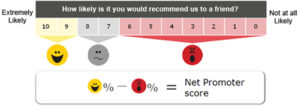How to Attract an Offer for Your Business

Amid the uncertainty there is no reason why you should not be preparing your business to attract an offer from a buyer.
I have proof of this since I am having conversations with buyers wanting to buy businesses. It is not because they are predatory. No, it’s because they see opportunities in their sector to acquire turnover, people and systems enhancing the offering to their customers.
I want to show you the important things to do to attract an offer for your business. This blog will show you some of the high-level considerations to attract an offer.
Background to attracting an offer from a buyer
Have you ever asked yourself: “Why does my business exist?” Businesses exist primarily to make money. What happens to that money and how it is distributed to stakeholders is another matter. In my experience buyers are attracted to those businesses that make their customers’ lives better in a way that others cannot.
Therefore, buyers must be shown how you do this. They are more likely to be attracted to make an offer. They will see the value in your business. As a result they are likely to pay a premium price for it as it as a good long term investment.
In addition, I come across many business that say they make their customers’’ lives better. There are few who can demonstrate this statement. How can you do this? The Net Promoter Score* is an excellent way to evidence this statement to a buyer. Likewise, customer satisfaction surveys and feedback reports demonstrate how the business has served its customers.
Above all, do you want to stand out from the crowd. This will attract an offer for your business. A business showing these features at an early stage of the process will attract offers.
A business unable to do this ought to step back and look at it through the eyes of a buyer. I always feel a seller should undertake a self assessment of the business.
So, what makes a business attract an offer?
The financials are important. On their own they will not necessarily attract an offer. For instance, the financials need to demonstrate to a potential buyer where the business makes its money. I help selllers in marketing their business. the objective is to attract an offer from a buyer, I ask my clients several questions. One is: “Where are the profit drivers?”
Unfortunately not all business owners can provide me with sufficient information. One of the questions a buyer will pose is: “If I invest £x in this business, how long will it take me to recover my investment?” The amount of money is not as important to some buyers as the recovery period. Similarly, some buyers are prepared to invest £1 million where they are confident they will recover their outlay in five years. Whereas others may say a ten year wait for a smaller amount is too risky.
In other words, growth is a prerequisite for any long term successful investment. Firstly, the seller’s ability to prove that the business is capable of delivering reasonable rates of organic growth. Secondly, you should be able to demonstrate where the growth is and the businesses’ ability to exploit it. If the buyer knows where future profits come from, they will gain a far greater appreciation of the business. In addition, their offer will be made in the knowledge and comfort that their investment will be recovered and the time scales. They will be able to walk into the business knowing it does not have to be “fixed”.
Therefore, demonstrating how and where you make profits is vital in attracting an offer.
What else makes it attract an offer?
As part of marketing a business for sale, I have sent out many Fact Sheets** (Flyers or teaser Documents). More detailed information about a business is contained in a Confidential Information Memorandum (CIM)***. The Fact Sheet is designed so as to stimulate further interest in the business for sale. On its own, it is not going to sell the business.
In addition, the CIM is designed to gain a meeting which subsequently will result in an initial offer. The amount of information disclosed and when it is disclosed is for another blog. Both these documents need to demonstrate at least its market position. That is how it markets and sells its products or services.
The details that will attract an offer include the strength of a businesses’ market position.
Firstly, customer perception is that they can find out most of the information they require online. Secondly, it has now become apparent customers are comfortable buying online. A business has to find new ways to show where it provides value. In the past this would have been demonstrated in a face-to-face meeting.
Thirdly, simply regurgitating information that is already widely available is no longer enough. Websites need to provide a deeper knowledge of their sector in an easily appreciable form. Most importantly, you need to demonstrate you are a real expert in your field.
Above all, each business adds value in different ways. Being able to demonstrate this online will encourage customers to move from researching to buying. A buyer of your business needs to see for themselves the value in your services or products. Where you are different and how you make your customers’ lives easier.
Therefore demonstrating the strength of your business’ market position is vital in attracting an offer for your business.
Customers have much more power.
Amongst other facilities, customers carry out research using Google and other search engines. It is then they contact the business. In addition, we are now conscious that our customers will contact us much later in the buying cycle. So, understanding the events that are driving the interest of your potential customers is vital. It can either be online or through direct contact.
Understanding the context of the purchase is important in how to create the sales experience. The advantage of the web is that everyone has a voice, if they choose to use it.
A few years ago we could only dream about the audience we now have on the internet. Customers are far more willing to be involved in the buying process. They can post comments and views on Twitter, Facebook, YouTube and others. So, the old style sales presentation is not necessarily going to work. It’s vital to capture the imagination of a customer.
The details of how your business does this will not necessarily be set out in the Information Memorandum. It may give away too much detail. Being able to say how a business does all these things at a later stage in the process will make it more likely you will attract an offer
As I prepare to market a business for sale, I really need to appreciate your customers’ sales experience. Feedback reports, surveys are important especially the questions that are asked and the way you handle the answers.
There are going to be several businesses up for sale in the next two years. Investing in and understanding where value is added in the context of the purchase and the sales experience will help attract an offer for your business.
Further reading
Why deals fail? https://www.assyntcf.co.uk/why-deals-fail/
So, how do you prepare for and go through the business exit process? https://www.assyntcf.co.uk/how-do-i-plan-for-the-day-i-want-to-leave-my-business/
How do I Maximise the Value in my Business? https://www.assyntcf.co.uk/how-do-i-maximise-the-value-of-my-business/ and
What makes a business more saleable? https://www.assyntcf.co.uk/what-makes-a-business-more-saleable/
—————————————————————————————————————————–
*The Net Promoter Score, or NPS®:
It is based on the fundamental perspective that every company’s customers can be divided into three categories: Promoters, Passives, and Detractors.
One simple question is asked: how likely is it that you would recommend our business to a friend or colleague? These groups are tracked and a clear measure of your company’s performance through your customers’ eyes is achieved. Customers respond on a 0-to-10 point rating scale and are categorized in these ways:
- Firstly, promoters (score 9-10) are loyal enthusiasts who will keep buying and refer others, fuelling growth.
- Secondly, Passives (score 7-8) are satisfied but unenthusiastic customers who are vulnerable to competitive offerings.
- Finally, Detractors (score 0-6) are unhappy customers who can damage your brand and impede growth through negative word-of-mouth.
To calculate your company’s NPS, take the percentage of customers who are Promoters and subtract the percentage who are Detractors.
**A teaser
A teaser is a short (one-to-two-page) document prepared by me for the seller to entice potential buyers into learning more about a business. It is anonymous and is designed to provide sufficient information to entice a buyer to sign an non-disclosure agreement in return for a confidential information memorandum*** that identifies the seller’s business.
I send these to prospective buyers whom I have identified through research. The document is intended to generate interest in the opportunity. My aim is to produce this document which will entice potential buyers to pick up the phone and call me. I will then provide the potential buyer with some more, agreed, information. On its own it is not going to sell the business. It will generate interest and take the process forward.
*** Confidential Information Memorandum (CIM)
A CIM has several possible meanings depending on the context in which it is used. Here, I refer to a document prepared by me with the seller ta describes the seller’s business in enough detail for the potential buyers to make an informed decision on pursuing the acquistion.
CIMs tend to be quiet exhaustive. They should include items relating to the financial standing, assets and liabilities, business description, market position, clients, strategies and promotion methods. The markets served and anonymised details of the employees of the company are also included.
ACIM is the most effective way of providing a large volume of information about a company to potential buyers. It is important to describe the business. To increase the effectiveness of the document, it should include as much information as possible to reduce future correspondence on the same topic. It is released after a Confidentiality Letter or Non-disclosure agreement is signed by the prospective buyer.
Again, on its own it is unlikely to sell the business. Subsequent meeting(s) and discussions should then attract an offer.

More reading, help and advice from Assynt Corporate Finance
Below you'll find links to other articles that offer help and advice about selling your business, what to look for, considerations and recommendations.
If you would like further help, contact us, we'd be only to happy to discuss your sale and can help if we can.
